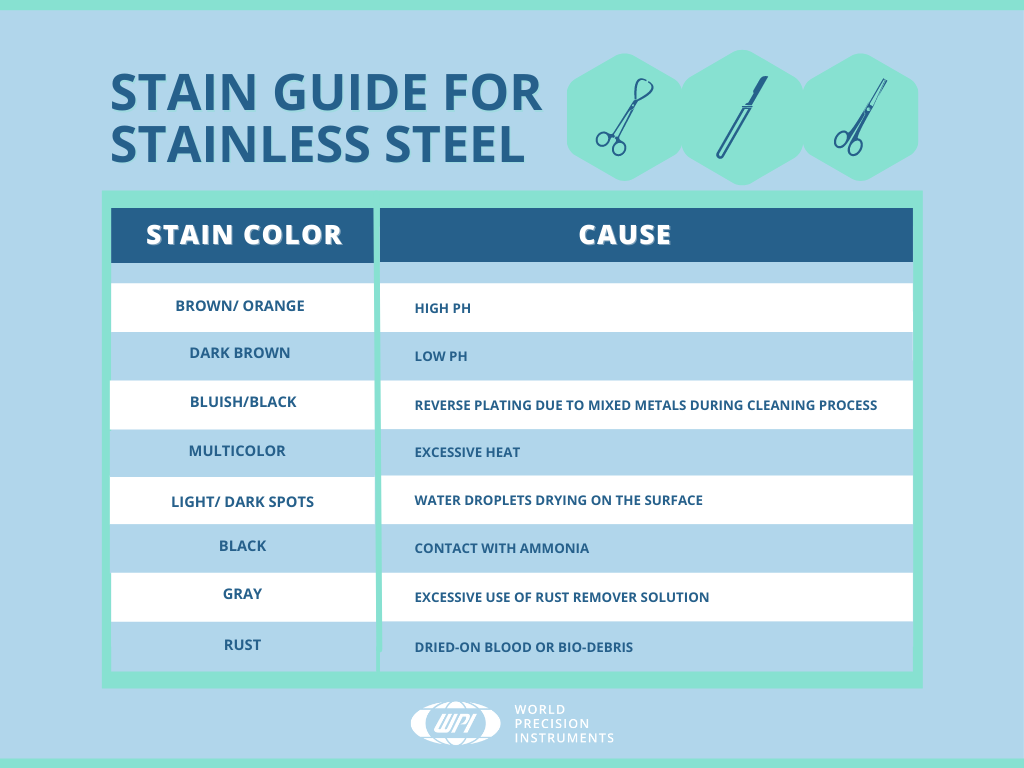Although stainless steel is corrosion-resistant, it can still rust and stain if it is handled improperly. To determine if a discoloration is rust or just a stain, erase the discoloration with a pencil eraser. If there is pitting in the metal under the discoloration, it is corrosion. If the discoloration is removed, it was just a stain.

- A High pH can cause a brown or orange stain on surgical instruments.
- If a stain is dark brown, the stainless steel surgical instruments have likely been exposed to a Low pH solution.
- A blue or bluish-black stain could be the result of reverse plating. This can happen if you mix metals in a cleaning cycle. For example, stainless steel instruments should not be mixed with titanium instruments. Do not place dissimilar metals (stainless steel, copper, chrome-plated, titanium, etc.) in the same cleaning cycle.
- A stain of multi-colors is caused by excessive heat.
- Light or dark spots on instruments are often caused by water droplets that dry on the surface of the surgical tools.
- Black stains result when surgical instruments come into contact with ammonia.
- Excessive use of a rust remover solution may dull the finish of surgical instruments and leave a gray stain.
- If your surgical instruments have a rust colored stain, it is probably dried on blood or bio-debris. Always rinse off all blood, bodily fluids, and tissue immediately after use. Dried soils may damage the instrument surface and make cleaning difficult. Use plain water, but do not use hot water, because proteinous substances will coagulate. To remove this stain, soak the instrument in an approapriate cleaner to loosen up any debris. Then follow a manual cleaning regiment.
If you have questions about your surgical instruments, contact us.





Request
Catalogue
Chat
Print